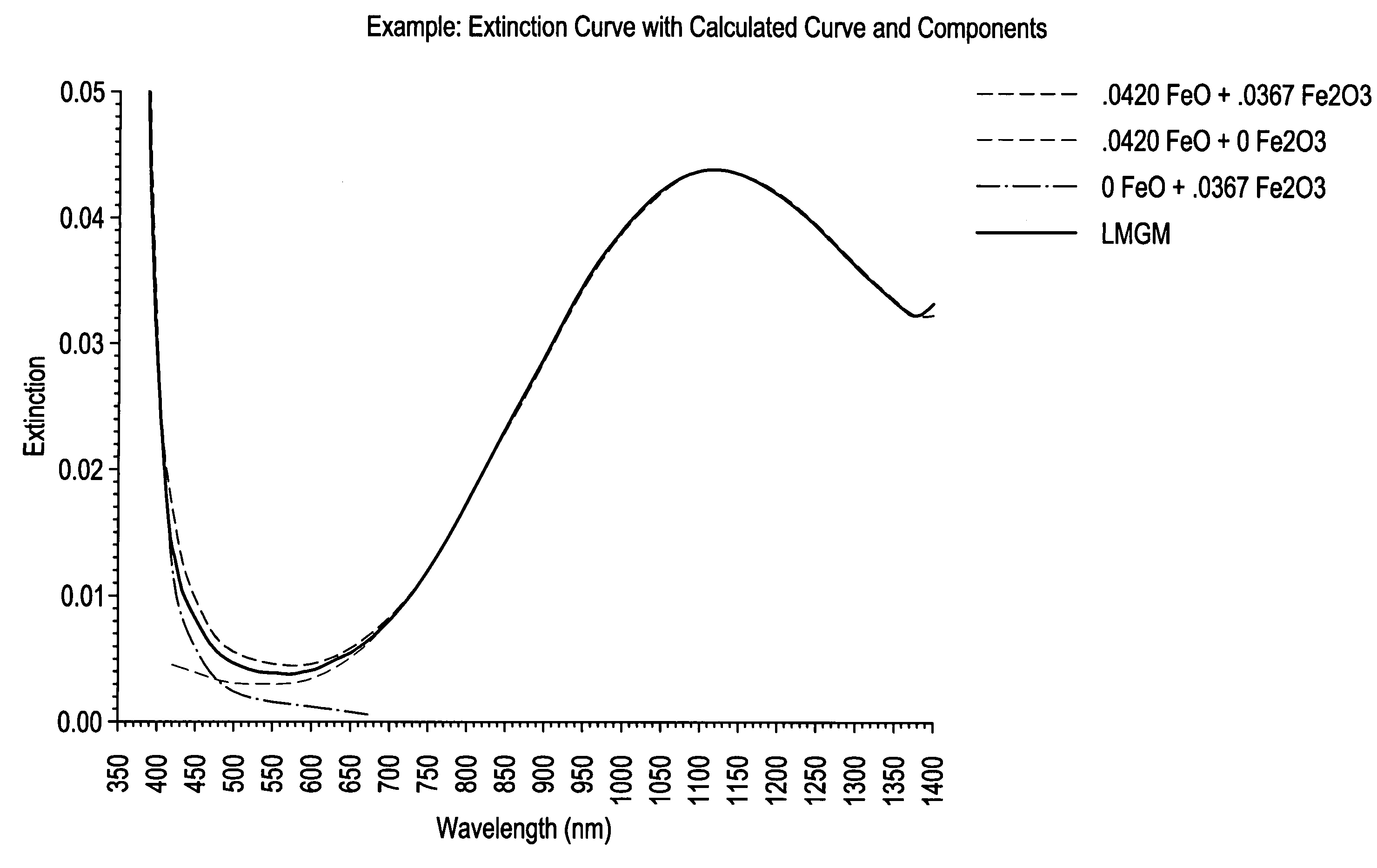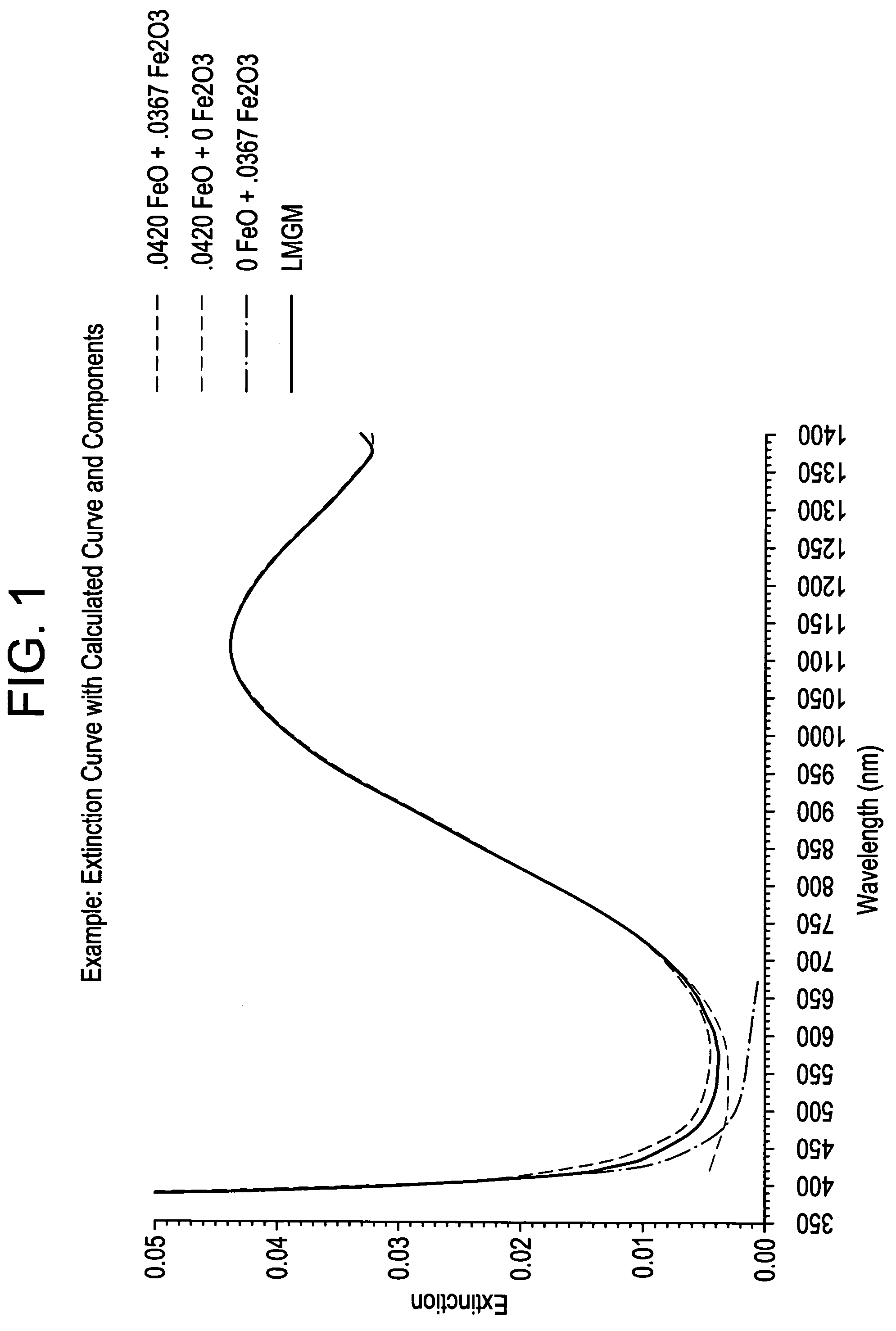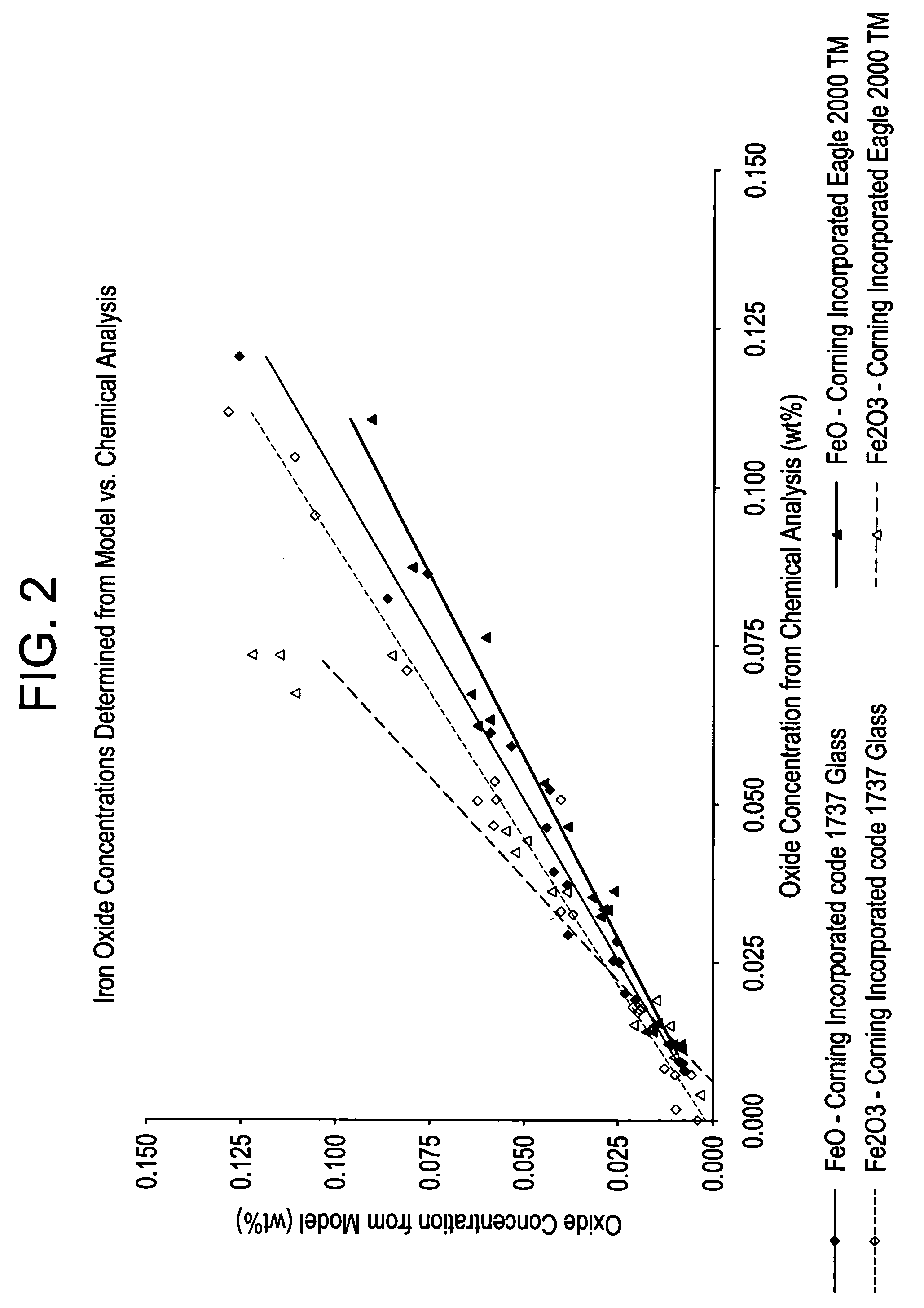Methods for quantifying the oxidation state of glass
- Summary
- Abstract
- Description
- Claims
- Application Information
AI Technical Summary
Benefits of technology
Problems solved by technology
Method used
Image
Examples
example 1
Preparation of Experimental Glass Melts Having Known Compositions
[0044]Experimental Design: A series of experimental glass melts were formulated having known quantities of several test variables. Boroaluminosilicate glass, the glass used in most AMLCD devices, was used as a substrate for the addition of each of the independent test variables. Two base boroaluminosilicate glass types were used in the experiment, Corning code 1737, and Corning Code Eagle2000™. Glass was fined with either arsenic (F) or antimony (G) as is well known in the art. Test variables included the following:[0045]MnO (0, 0.5, or 1.0 weight % expressed as MnO2);[0046]FeO (250, 750, or 1500 parts per million (PPM)) by weight expressed as Fe2O3;[0047]Glass Type (Corning Code 1737F, 1737G, Eagle2000™F, or Eagle2000™G);[0048]Oxidation State (low (carbon), medium (nothing), high (nitrate—Ba, Sr or NH4) (0 or 2 weight % expressed as NO2)).
[0049]Sixty-three melts in randomized, factorial design, with replicates, were p...
example 2
Transmission Data from Experimental Glass Melts Provides Accurate Total Iron and Manganese Levels
[0058]Experimental Design: The series of experimental glass samples discussed in Example 1 were used to correlate total iron levels in each glass sample with the sample's transmission curve. That data was then used to develop a model used for calculating the FeO and Fe2O3 levels in Corning Incorporated code 1737 and Eagle2000™ glasses.
[0059]Transmission Measurements: Transmission measurements of the experimental glass melts were performed using the 3 mm thick and 10 mm thick polished discs (from the two discs at each thickness, the one containing the least amount of striae and seeds was selected and used for the measurement). Transmission curves from 200 nm to 1400 nm were obtained using the 10 mm thick discs, with a UV-Vis-NIR Spectrophotometer. A broad absorption band at about 1110 nm indicates the presence of Fe(+2) and the UV cutoff location indicates the amount of Fe(+3) present wit...
example 3
A Glass Sample's Iron Oxide Ratio is an Indicator of that Sample's Oxygen Partial Pressure
[0066]Experimental Design: The iron ion concentrations as determined in Example 2 can be converted to a ratio of FeO and Fe2O3 concentrations (mole fraction) and used as an indicator of oxygen levels in a glass sample.
[0067]Equilibrium constants: A measure of oxygen is calculated by using the appropriate equilibrium constant of the following equation:
2Fe2O3=4FeO+O2
Keq=[FeO]4*[O2] / [Fe2O3]2
1400° C. was chosen as a somewhat arbitrary but relevant temperature for use in determining a value for the equilibrium constant:
Keq=5.51×10−6(1400° C.)
As such, solving for the oxygen partial pressure and taking the log of both sides gives:
PO2=(Keq)*[Fe2O3]2 / [FeO]4
Log(PO2)=Log[Keq]+Log([Fe2O3]2 / [FeO]4)=Log([Fe2O3]2 / [FeO]4)−5.26
Thus, a measure of the oxygen partial pressure for any glass sample is obtained by substituting into the last equation the molar concentrations of the two oxides of iron. It is recognized...
PUM
| Property | Measurement | Unit |
|---|---|---|
| Thickness | aaaaa | aaaaa |
| Nanoscale particle size | aaaaa | aaaaa |
| Nanoscale particle size | aaaaa | aaaaa |
Abstract
Description
Claims
Application Information
 Login to View More
Login to View More - R&D
- Intellectual Property
- Life Sciences
- Materials
- Tech Scout
- Unparalleled Data Quality
- Higher Quality Content
- 60% Fewer Hallucinations
Browse by: Latest US Patents, China's latest patents, Technical Efficacy Thesaurus, Application Domain, Technology Topic, Popular Technical Reports.
© 2025 PatSnap. All rights reserved.Legal|Privacy policy|Modern Slavery Act Transparency Statement|Sitemap|About US| Contact US: help@patsnap.com



